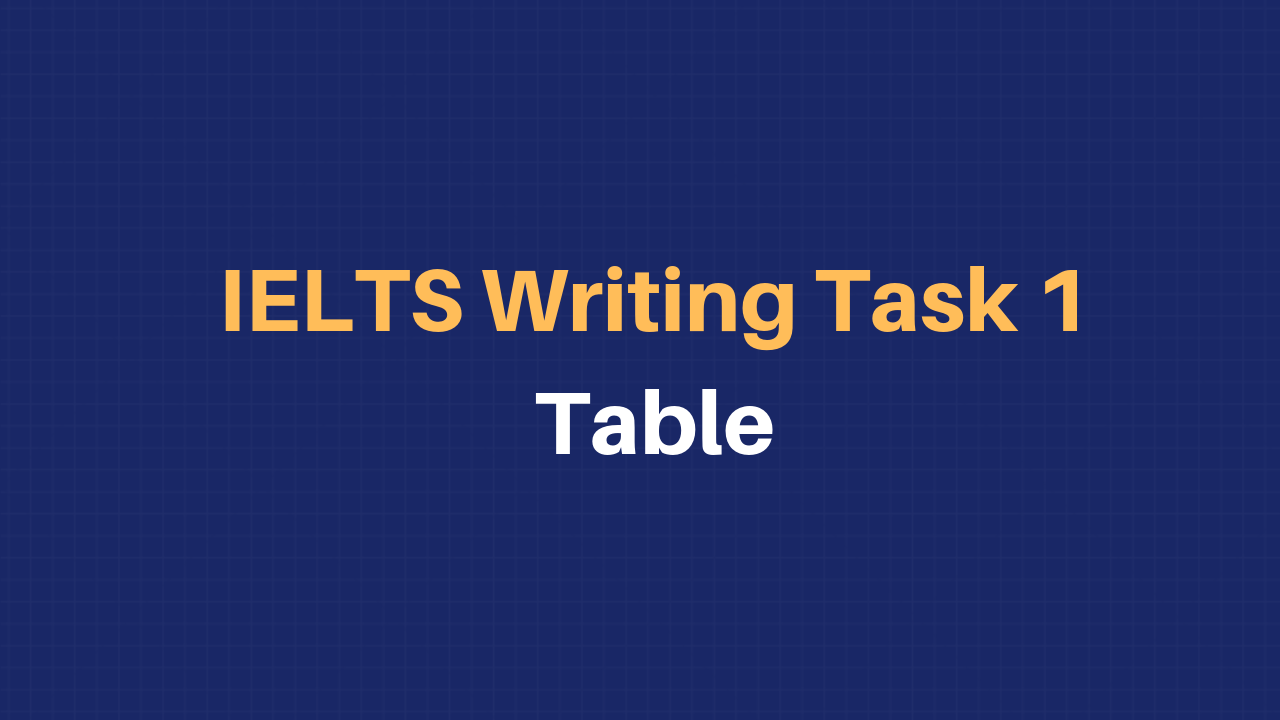Explaining the data on a table in the IELTS Academic Writing Task 1 is quite common. Such essays are not like the ones you are familiar with. These are kind of analytical essays and require to be written in a certain style.
While there are quite a number of types of such questions, we will focus on the explaining table type questions here.
How to Structure Table Essays?
IELTS Academic writing task 1 structure is usually depends on the type of chart you are asked to write about. Normally we follow a four paragraph structure with a concluding paragraph. However, in case of line graph and table we do not write a conclusion as they are not discursive essays.
Here is a rough structure that you can follow:
Paragraph 1 (Introduction)
Sentence 1- Paraphrase Question
Paragraph 2 (Overview)
Sentence 1- Overview of first main feature
Sentence 2- Overview of second main feature
Sentence 3- Make general comparison, if appropriate
Paragraph 3 (Details of significant feature 1)
Sentence 1- Supporting details
Sentence 2- Supporting details
Sentence 3- Supporting details/comparison details, if appropriate
Paragraph 4 (Details of significant feature 2)
Sentence 1- Supporting details
Sentence 2- Supporting details
Sentence 3- Supporting details/Comparison details, if appropriate
How to Identify Key Points?
This is often the area most students struggle with. This is because of one main reason: lack of prioritising ability. Prioritising means you should choose two or three significant features and just write about these. The question often specifically says ‘select main features’, so examiner expects you to do this. There should be 2 or 3 main features for you to comment on.
If you are unable to do this you are automatically tempted to write about every single piece of data you will find. This doesn’t allow you to summarise effectively. You must remember that this is a summarising task. Writing a lengthy overview and spending too much time on this task won’t help you in any way.
Here are some things you should be looking for to include in your discussion:
- High/low values
- Erratic values
- Biggest increase/decrease
- Volatile data
- Unchanging data
- Biggest majority/ minority (pie charts)
- Biggest difference/similarities
- Major trends
- Notable exceptions
Looking for these things should allow you to pick out the most important features.
Another thing you must not do is, overthink the question. It is often tempting to think that the answer is too obvious and therefore not write about it. A common main feature is a general increase or decrease. Some students see this as too simple and ignore it all together. Reporting the obvious or simple features is just as fine.
Examples of Table Essays
Question 1:
The table below shows the number of medals won by the top ten countries in the London 2012 Olympic Games.
Summarise the information by selecting and reporting the main features, and make comparisons where relevant.
Write at least 150 words.

Answer:
The given data shows the top ten medal winning countries in the London Olympic Games that was held in the year 2012. As is presented in the table data, the United States won the highest number of medals while Hungary had the least number of medals in this Olympic Games.
According to the presentation, USA won the highest number of medals which was 104 and they also got the highest number of Gold and Silver medals. The highest number of Bronze medals was won by the Russian participants which were 32. Two Asian countries were in the top-ten-list, in terms of their medal winning, were China and South Korea. China won 88 medals in total, of which 29 were gold medals. South Korea was in 5th position with their 28 total medals. UK and Russia were in 3rd and 4th positions respectively with 65 and 82 medals. Though Russia won more medals than the UK, they were in 4th position because of the fact that the UK participants won more gold medals which seem to have better points than silver and bronze medals to be in the top position. The other countries who were in the Top-ten-list were Germany, France, Italy, Hungary and Australia with less than 50 medals in total. The least gold medal winning country was Australia and they were in the 10th position of the list.
Question 2:
The table below gives data on the hour of leisure time per year for people in Someland.
Write a report for a university lecturer describing the information in the table below.
You should write at least 150 words.

Answer:
The table shows how people in different age groups spend their leisure time in Someland over the course of a year. Overall, the amount of leisure time available varies considerably across the age groups and people of different age levels have very different ways of spending their leisure time.
According to the figures, as people age in Someland, their time for socialising reduces. Teenagers and people in their twenties spend around 500 and 350 hours per year on socialising with a group of more than 4 people. Although the total hours of socialising in their 30s, 40s, 50s and 60s are fairly constant (between 300-350), socialising with more than 4 people drops dramatically to 50 hours in the 30s and 40s age groups. Group and individual exercise follow a similar pattern.
People of all ages spend a good part of their leisure time on entertainment such as enjoying TV/ video and cinema. In both cases, teenagers and retired people spend around twice as much time as those who are at working age. Home entertainment ranges from just over a thousand hours for teenagers and retired people and an average of 600 hours for everyone else. Cinema accounts for 100 hours of the teenagers and retired people’s leisure and 25-50 hours for the rest. It is worth noticing that there is a significant trend towards solitary and smaller group activities as people grow older.
Conclusion
IELTS academic writing task 1 can be easily nailed if you have the right ideas and the right writing style. An appropriate structure and a smooth discussion of the key points are sure to add volume to your scores.








